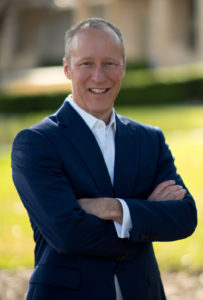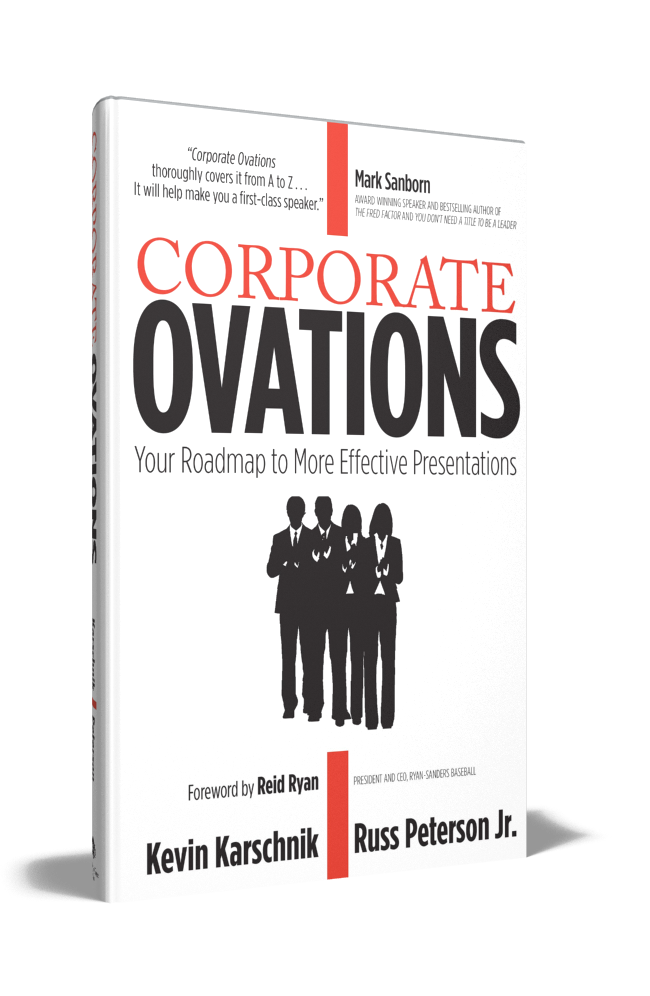I’m sure you’ve heard the advice from others to grab your audiences’ attention from the very start of your presentation. Then, hang on to it throughout your presentation. That sounds great! The tough part is answering the question… “Now, how do I do that exactly?”

Don’t use a joke!
I’m sure at some point you’ve heard people say, “Oh, you’re giving a speech? You should start with a joke! That’ll loosen up the audience!” If you’re a delivering a keynote speech or the groom’s toast at a wedding, you can probably make that work. But, if you’re speaking in a business environment, I would advise against it.
I’ve got nothing against using some humor in a business presentation, but out-right jokes (e.g. “Two guys walk into bar…”) is not appropriate for a business presentation. In most cases, (because there are always exceptions) jokes like this in a business setting will be interpreted by the audience as an amateur attempt to gain acceptance with the audience.
What’s the difference between humor and jokes?
Jokes are delivered with an intent to gain laughter and the joke is the point. Humor is usually injected with a pithy anecdote which serves as a humorous side-note, but it is not the point. The point is something else.
5 ways to grab audience attention
There are many ways to open a presentation or speech and grab the audiences’ attention. Think about how you can connect with your audience and where they are today by using one of the following methods to gain their attention.
1. Tell them a story
Storytelling is an art form. I think you know this is true because there are people in your life and you love to hear their stories. Then there are others in your life… well, maybe not so much. If you’re going to share a story with your audience first, make sure you have a point or a moral to the story. Next, tell it in as few words as possible. Use character names and give them a voice. Here’s a past blog post with more details on storytelling.
2. Quote someone they know
Using a meaningful quotation from another person can create an immediate connection with your audience. When I deliver a keynote to a larger group I mingle with the audience before I begin. When I get their thoughts on the topics for the day, I can use that in my opening and give credit to them by name. Quotes don’t need to be from someone like George Washington, you can simply quote Dave in Accounting and get the same affect with the audience.
3. Ask them a thoughtful question
Some of my students tell me they want to be more engaging with their audiences. I think we would all love to be more engaging, but the question can be, “How do I effectively do that?” When I’m coaching others, I always start with engaging the audiences’ minds. Engage their brains! One simple way to do that is with a question that makes them think. If the question is too simple, it doesn’t work. Go for the question that makes them go, “Hmmmmmm…”
- “If you only had 10 minutes to prep before a meeting, what would you want to know?”
- “How much money do you think we spend globally each year on airfares?”
- “What do you think is the number one complaint from our customers?”
4. Make a bold statement
Bold statements need to shake the audience’s foundation a little bit. It can be a cruel reality or it could be a challenging goal for the future. Either way, it needs to wake them up. Depending on who is in the audience, this can take on many forms.
- “20% margin by the year 2020.”
- “ZERO personal injuries for this next fiscal year.”
- “Wendy Johnson is retiring and stepping down as our CEO.”
5. Share an illustration
Illustrations are not stories. These are descriptions that tap into the imagination of the audience. If you want to engage the audience’s brains you should focus on three key areas: their logical brain, their feeling brain, and their imagination. One of the easiest (and most effective!) ways to engage their imagination is to get the audience to picture something in their mind. Sometimes, the crazier the better!
- “Picture 2 billion iPhones stacked end to end and reaching all the way up to the moon.”
- “Imagine our organization in 10 years. We have grown to 7 global locations on 5 continents…”
- “What if we could take all of our datacenter and consolidate them down to only 2 on each coast.”
Gaining your audience’s attention from the very start is something you need to plan. It doesn’t happen by accident… I guess I shouldn’t say it won’t ever happen without planning. It happened by accident with me once…
I was speaking in downtown Dallas and as I gestured my hand toward the large screen behind me from the stage, I fell off the back of the stage…
I’m sure that mishap got everyone’s attention and I’m positive I didn’t plan that one. Ask me about it the next time you see me and I’ll be happy to finish that story for you.
Time to go PLAN my next opening!
Russ
Let’s connect…
iSpeak teaches workshops on Professional Selling to help sales leaders gather the most important data and then use that information to create the right message. Are your sales presentations closing eyelids or deals?
Russ Peterson Jr. is the co-founder and Managing Director of iSpeak, Inc. – An award-winning professional development training company. Russ is a speaker, international trainer, and published author on Professional Sales Communication and Business Communication. He delivers workshops, keynotes, and personal communication coaching services to business professionals in the US and around the world. His leadership blog assists leaders in giving voice to their vision. You can connect with Russ directly through Twitter, Facebook and LinkedIn.



Thanks for sharing. I read many of your blog posts, cool, your blog is very good.